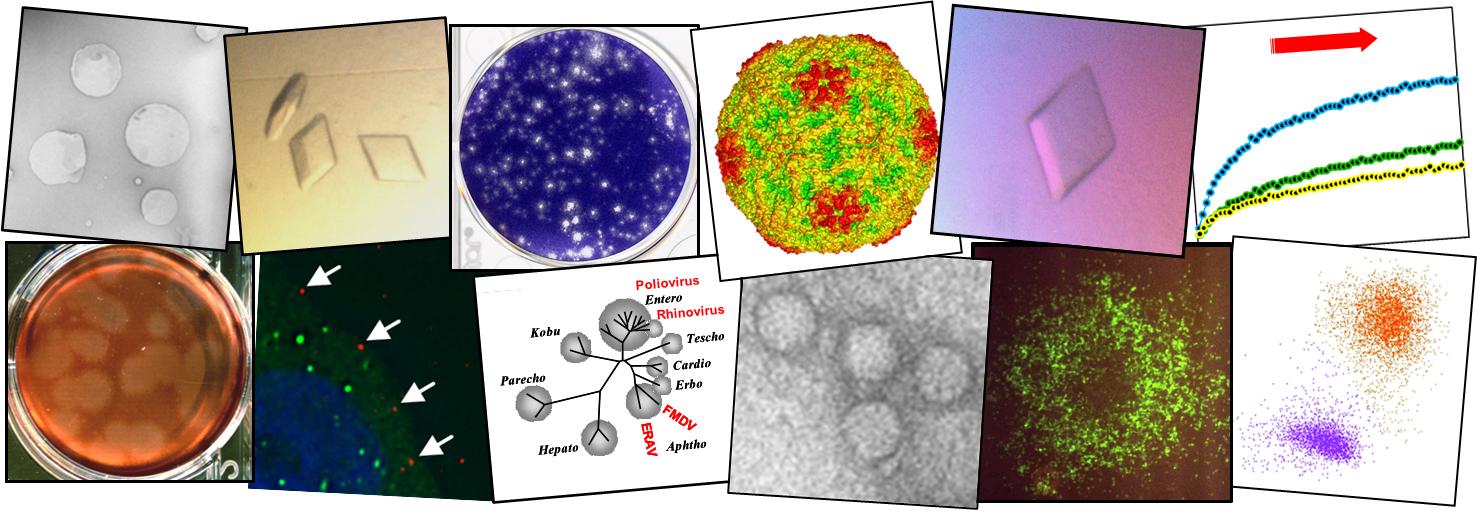Picornavirus RNA is protected from cleavage by ribonuclease during virion uncoating and transfer across cellular and model membranes
Picornaviruses are a large family of important human and animal pathogens that include poliovirus, human rhinovirus and foot-and-mouth disease virus. Picornaviruses enter the host cell by hijacking one of the vesicle-mediated cellular entry routes. However, once the virus is internalized, the mechanism used to deliver the viral genome across the vesicle membrane and into the cytoplasm remains unclear and even controversial. Here we show that for poliovirus (a member of the enterovirus genus), viral RNA is translocated directly from the particle, across the vesicle membrane into the lumen of liposomes in a receptor-decorated liposome model, or cytoplasm during infection, without being exposed to external medium surrounding the liposomes or the lumen of the entry vesicle, respectively. Our results suggest that the interaction between the viral particle and the membrane results in a specific mechanism of viral genome delivery that not only directs but also protects the RNA so that it reaches the cytoplasm as an intact and functional molecule. Additionally, we show that this is also the case for equine rhinitis A virus, a member of the aphthovirus genus, whose genome delivery mechanism has previously been thought to differ significantly from the mechanism used by enteroviruses suggesting the possibility of a unified mechanism of RNA delivery for the entire picornavirus family.

